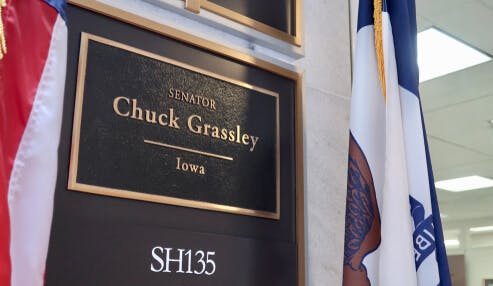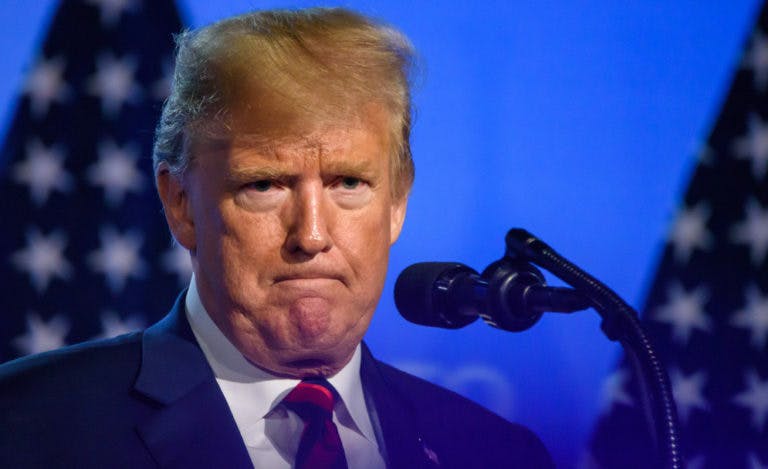EB-5 needs to 'brought back to life'
The EB-5 program could play a crucial role in post-COVID-19 economic recovery for the United States, states immigration lawyer Carolyn Lee. During the Great Recession, distressed projects found new life through EB-5 capital, and the program can have a similar economic impact now.
But recent EB-5 filings are at their lowest numbers in many years. “Now seems the opportune moment to improve EB-5 program oversight and bring this investment and job-creating engine back to life,” she states.
However, filings are down because of backlogs for the countries with the most EB-5 interest. Increasing the number of new visas will solve the backlog problem and help restore robust EB-5 activity from these countries — and significantly boost the program's impact.
Stakeholders and lawmakers have discussed various credible solutions to increase the supply of EB-5 visas. Any one or combination of these solutions could be used by any branch of the U.S. government. The following are solutions that Lee believes can reinvigorate the program and the U.S. economy.
Remove yearly visa limits for 'government interests'
One proposal is to exempt certain investment visas from annual visa limitations if there is a "compelling U.S. government interest."
Congress has previously exempted specific permanent resident applicants from annual limits, such as investors who applied for adjustment of status before June 1, 1978. Additionally, a significant portion of the family-sponsored 2-A category for spouses and children of lawful permanent residents is exempt from per-country limitations.
There are other examples of the U.S. government changing immigration requirements if it serves the greater good of the country. The Immigration and Nationality Act exempts workers who serve the U.S. "national interest" from labor-certification requirements.
USCIS policy allows expedited adjudication of immigration benefits for cases of "compelling U.S. government interests," such as those related to public safety or national security.
There is a solid argument that exempting certain EB-5 visas from yearly limits would benefit the U.S. economy and be in the government's interest. For example, the government could exempt visas associated with investments in infrastructure, healthcare, urban revitalization, STEM research, public-private partnerships, and distressed businesses.
We can help you raise EB-5 capital.
Let's TalkExclude derivative family members from EB-5 limits
The proposal of omitting derivatives from EB-5 visa limits was part of Senator John Cornyn’s (R-Tx) legislative draft for EB-5 reform in 2017. “This is significant because it shows a senior Republican senator on the Judiciary Committee presenting the idea as a credible solution,” Lee observes.
While Republicans don’t support many immigration policies, EB-5 is a rare exception that claims non-partisan support and advocacy.
Exempting dependents from EB-5 limits is backed by legislative history. Many stakeholders argue that legislative language shows that Congress originally intended for 10,000 investors to immigrate to the U.S. each year and create 100,000 jobs — without counting their dependents separately.
Additionally, “uncontested legislative history,” according to Lee, shows multiple senators referring to 10,000 investors, and a state representative spoke of a minimum of 100,000 jobs created (alluding to 10 jobs created by each of the 10,000 investors).
Yet another argument for not counting dependents in the yearly quota rests in the Immigration and National Act (INA). The act gives dependents the “same status and same order” as the principal immigrants — but retrogression can disrupt this order when it counts principals and dependents separately.
As an alternative to legislation providing this solution, an executive order could do so; the president could instruct the Department of State to exclude derivatives towards the annual EB-5 quota.
Reallocate Diversity visas
As another way to address economic recovery needs, the Diversity Visa category could be disbanded, or its visa numbers could be reallocated to other categories.
For example, the 55,000 Diversity visas could be evenly distributed to the five employment-based categories. Doing so would add 11,000 more EB-5 visas.
Alternatively, reallocating the current statutory proportion of 7.1% of the employment-based worldwide limit would add 3,905 more EB-5 visas.
Recapture unused visas from previous years
Approximately 180,000 employment-based visas have never been used and can potentially be "recaptured" for EB-5 use.
Congress has recaptured unused visas in the past. The American Competitiveness in the Twenty-First Century Act recaptured 130,107 employment-based visas that went unused in FY 1999 and FY 2020. Also, the REAL ID Act of 2005 recaptured 50,000 unused employment-based visas for Schedule A (healthcare) workers.
A significant number of unused employment-based visas from before the year 2000 “fell” to family-sponsored limits but were never used or recaptured. Recapturing visas for employment-based categories hinges on “political palatability," Lee observes.
EB-5 solutions that don't require adding visas
Not all solutions to the visa supply problem require adding more visas.
One such legislative fix is to provide travel permits and employment authorization to EB-5 investors and their family members waiting for their visas.
For investors outside of the U.S., this solution would be somewhat similar to offering the benefits of concurrent filing to investors adjusting status inside the U.S. This would not be as expansive as concurrent filing benefits which offer certain protections under the Child Status Protection Act., but would still soften the blow of lengthy visa backlogs.
An EB-5 reform bill from 2019, S. 2778, proposed these benefits and had bipartisan backing.
Another potential solution involves creating a nonimmigrant visa category specifically for EB-5 immigrants, allowing them to work and travel, or adjusting USCIS and DOS policies to readily permit B visitor visa extensions without being subject to public benefits conditions.
Legislative versus executive solutions
The above options represent legislative and executive solutions to the EB-5 visa-limit problem. It is worthwhile to note the differences between these two types of action.
Legislative fixes include the ones in the EB-5 Reform and Integrity Act of 2022 (RIA). A more recent example is the Dignity Act, sponsored by Congresswoman Salazar and Congresswoman Escobar.
In the hierarchy of legal authority, an act of Congress is the highest, second only to Supreme Court opinions, so a legislative fix would be very robust unless it had an internal limit like being a pilot, that is, a short-term experiment.
An executive fix would be one from an administration ordering agencies under its authority, like the State Department, to count differently than it had been.
It can also be done by an agency sua sponte, Lee states, in other words, on its own without being ordered to do so by the president. Although administrations have different executive priorities that can be short-lived, as we've seen with the use and disbanding of executive orders in the prior two administrations, they can also have lasting effect and become, with time, nearly unshakeable. An example of this is the State Department's construction of the INA which includes derivatives in the worldwide allocation.
See the Carolyn Lee article "EB-5 Numbers and the COVID-19 Economic Recovery"





